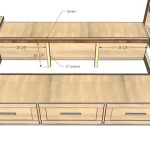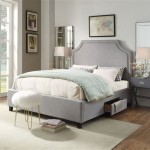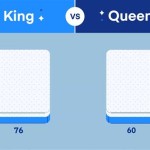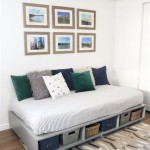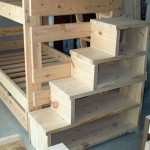Vintage Cast Iron Twin Bed Frames: A Guide to History, Styles, and Restoration
Vintage cast iron twin bed frames evoke a sense of nostalgia, representing a bygone era of craftsmanship and enduring design. These beds, once commonplace, are now sought-after pieces, adding a touch of history and elegance to modern bedrooms. Understanding their history, varied styles, and restoration methods can assist collectors and enthusiasts in appreciating and preserving these unique furnishings.
The popularity of cast iron beds peaked during the Victorian era, spanning from the mid-1800s to the early 1900s. Advancements in iron production during the Industrial Revolution made cast iron a readily available and affordable material. This accessibility, combined with the material's durability and the ability to create intricate designs, propelled cast iron beds into widespread use.
The Victorian era saw a flourishing of decorative arts, and this artistic influence is clearly reflected in the designs of cast iron beds. Elaborate embellishments, including floral motifs, scrolls, and geometric patterns, were common features. Manufacturers often incorporated stylistic elements from various historical periods, such as Renaissance, Gothic, and Rococo, resulting in a diverse range of designs. Headboards and footboards frequently showcased intricate castings, demonstrating the skill of the ironworkers.
Beyond the Victorian period, cast iron beds continued to be produced in the early 20th century, though styles began to shift. The Art Deco movement, with its emphasis on geometric shapes and streamlined designs, influenced the aesthetic of cast iron beds during this time. Simpler, less ornate patterns replaced the elaborate Victorian motifs, reflecting the changing tastes of the era. The use of cast iron in bed frames gradually declined after World War II, with the rise of other materials like wood and metal alloys.
Several key manufacturers played a significant role in the production of cast iron beds. Companies like Simmons and Griswold became renowned for their high-quality castings and innovative designs. These manufacturers often marked their products, and identifying these markings can provide valuable information about a bed's origin and age. Antique catalogs and historical records can offer further insights into the specific models produced by these companies.
Identifying authentic vintage cast iron beds requires careful examination. Genuine antique beds typically exhibit signs of age and wear, such as minor imperfections in the casting or a naturally aged patina. The weight of the bed is also a significant factor, as cast iron is considerably heavier than modern materials. Reproduction cast iron beds are available on the market, and distinguishing them from genuine antiques requires attention to detail and knowledge of historical styles and manufacturing techniques.
Restoring a vintage cast iron bed frame can be a rewarding endeavor, bringing new life to a treasured piece. The restoration process typically begins with careful cleaning to remove dirt, rust, and old paint. Various cleaning methods can be employed, depending on the condition of the bed. Once cleaned, any necessary repairs, such as welding broken pieces or reinforcing weak joints, should be addressed. Repainting the frame is the final step, allowing for customization while protecting the metal from future corrosion. Choosing historically accurate colors and finishes can enhance the bed's authenticity.
Choosing the right paint for a cast iron bed frame is crucial for both aesthetic and protective purposes. Specialized metal paints designed for outdoor use offer excellent durability and resistance to rust. A primer formulated for metal should be applied before the topcoat to ensure proper adhesion and longevity. When selecting a color, consider the bed's style and the desired aesthetic. Neutral colors, such as black, white, or cream, can complement a variety of décor styles, while bolder colors can create a statement piece.
Proper assembly of a vintage cast iron twin bed frame is essential for stability and safety. Most antique frames utilize a system of interlocking rails and side rails held together with screws or bolts. Ensuring all components are securely fastened is vital to prevent wobbling or collapse. Using appropriate hardware, such as period-correct screws or replacements that match the original design, contributes to the bed's overall authenticity.
Integrating a vintage cast iron twin bed frame into a modern bedroom can add a touch of timeless elegance. These frames can complement a range of interior design styles, from traditional to eclectic. Pairing the bed with vintage-inspired linens, rugs, and accessories can create a cohesive and charming aesthetic. Alternatively, contrasting the antique bed with modern furniture and decor can create a visually striking juxtaposition.
Caring for a vintage cast iron bed frame involves regular dusting and occasional cleaning. Avoid using harsh chemicals or abrasive cleaners, as these can damage the paint and the underlying metal. Inspecting the frame periodically for signs of rust or loose hardware allows for prompt repairs, preventing further damage and ensuring the bed's longevity. With proper care and maintenance, a vintage cast iron twin bed frame can remain a cherished piece for generations to come.
Vintage Victorian Cast Metal Twin Bed Frame Only

Antique Wrought Iron Twin Bed Frame Black

Antique Cast Iron Twin Bed

Antique Victorian Iron Twin Bed

Antique Victorian Cast Iron Twin Sized Bedframe Chairish

Antique Victorian Cast Metal Twin Bed Frame One Available Refurbished Perfect

Discover The Charm Of A One Kind Vintage Wrought Iron Twin Bed

Cream Iron Twin Antique Beds Mps29 At 1stdibs

Alberte White Metal Bed Frame Iron

Antique Victorian Twin Bed Chairish
